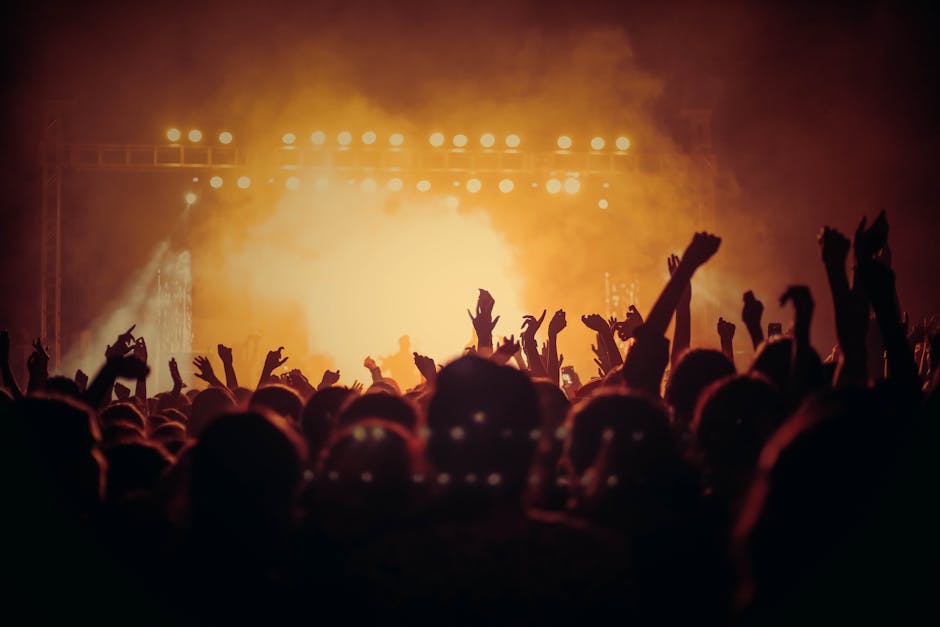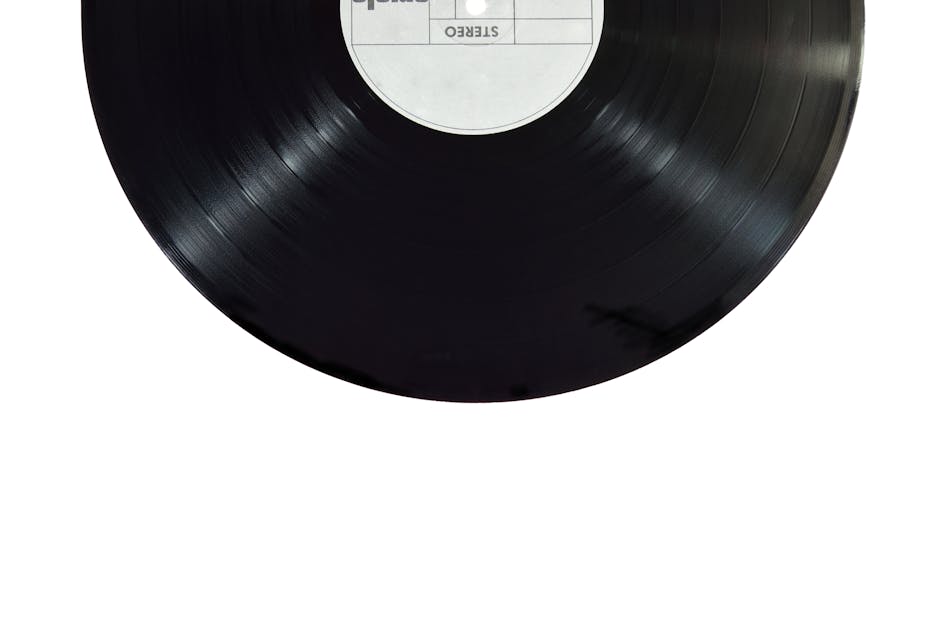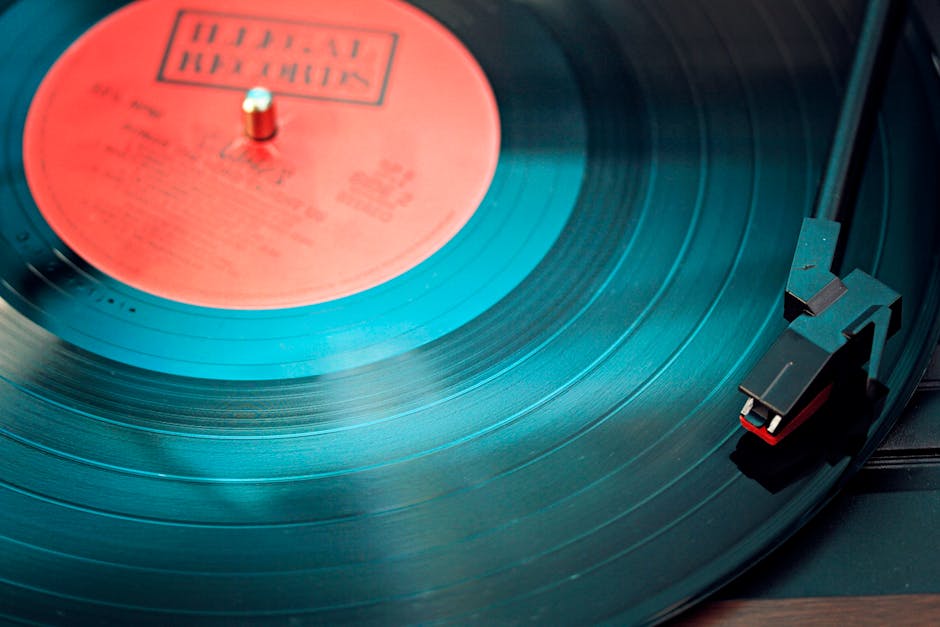Exploring the influence of music on poetry reveals a profound and enchanting relationship between the two art forms. Music possesses an undeniable power to evoke emotions, shape narratives, and elevate the written word. The harmonious melodies and rhythmic patterns woven into musical compositions often find their way into the realm of poetry, influencing its rhythm, tone, and even its very structure. Understanding the interplay between music and poetry unlocks a deeper understanding of both art forms.
37 Rhythmic Beats: Exploring the Influence of Music on Poetry
Harmony in Discord
In cacophony, I find my peace
A symphony of clashing strings
Echoes of memories, loud and released
In discord, my heart finds wings
Rhythmic Whispers
Silken threads of sound entwine
Moonlit nights, whispers divine
In the silence, I find my voice
A gentle breeze that rustles choice
Sonata of the Soul
Allegro of heartbeat drums
Vivace of life’s rhythmic hums
Adagio of memories past
Presto of moments that will last
Symphony of Shadows
In twilight’s hush, I find my way
Echoes of forgotten days
Melodies of love and loss entwine
A symphony that’s truly mine
Beat of the Unknown
In the pulse of the unknown, I roam
Free from tempo, rhythm, and tone
Uncharted territories of the heart
Where the beat of the unknown takes part
The Poet’s Lament
Oh, for the rhythm of a bygone time
When words flowed like a poet’s rhyme
In perfect harmony, I’d write
But now, my words are but a distant light
Lyrics of the Wind
Whispers of the zephyr’s sigh
Echoes of a long-forgotten cry
In the breeze, I find my song
A melody that’s strong and long
Crescendo of Dreams
In slumber’s realm, I find my voice
A chorus of the heart’s deep choice
Echoes of a dreamer’s heart
A crescendo that will never depart
Discordant Harmony
In dissonance, I find my peace
A symphony of clashing release
Echoes of memories, loud and free
In discord, my heart finds ecstasy
The Heartbeat of Poetry
In every line, a rhythm beats
A symphony of words that meet
In harmony, the heart finds rest
In poetry, the soul is blessed
Rhapsody of Memories
In fragments of forgotten time
Echoes of love, of joy, of rhyme
In the melody of what’s past
I find solace that will forever last
Song of the Spheres
In celestial harmony, I soar
Echoes of a cosmic score
In the rhythm of the universe wide
I find my place, my heart’s inside
Enjoying these poems? You can also create your own poems with our Advanced AI Poem Generator.
Whispers in the Silence
In hushed tones, the beats resound
A gentle breeze that stirs the ground
A symphony of whispers low
Echoes of emotions yet untold
Rhythmic Pulse
My heart beats in time with yours
A symphony of love and wars
A rhythm that echoes through
A harmony that only we knew
Stormy Weather
The drums of stormy weather rage
Thunderous beats that shatter age
Crashing waves that ebb and flow
A turbulent sea of emotions aglow
Songbird’s Melody
A lullaby of sweet delight
A melody that shines so bright
A symphony of gentle peace
A soothing balm that calms the seeking release
Beat of the City
Concrete lines kiss skyscrapers high
Urban rhythm beats in the grey-blue sky
Blinking lights, drumming sound
Night’s symphony wearing the town
Laughter flows like moving tides
As strangers’ smiles, unnoticed slide
We’re just a drop in the human sea
Where music’s pulse sets us free
To find our own, we step aside
The city’s pulse, our own heartbeat’s stride
Through concrete canyons, winding streets
We weave a tapestry of love and defeat
Each step a rhythm, tuned and bright
In harmony with city’s plight
In the madness, we find peace
When our own heartbeat’s in perfect release**Melodic Verse**
In the beginning, there was silence,
A vast and empty void,
But then came rhythmic beats,
And with it, poetry’s birth.
Music’s swaying tempo,
A muse for the poet’s heart,
Inspiring words to flow,
And dance upon the page.
Each note, a precious gem,
Strung together in a chain,
Crafting verses, choruses,
A symphony of emotions.
The ballad of our lives,
Composed in minor keys,
Echoing our sorrow, joy,
A tale of love and loss.
The waltz of sweet affection,
A rhythm easy to adore,
Tripping lightly on the tongue,
Sweeter than spun sugar.
The blues of heartache,
A cry that tugs the soul,
Urging us to feel the pain,
To heal and move along.
Rock’s rebellious anthem,
A shout that breaks the silence,
A defiant pulse,
A battle hymn of freedom.
Hip-hop’s raw confessions,
A beat born of the street,
A drum that drives the words,
Resounding in the heart.
The rhythm of the universe,
A constant celestial hum,
A reminder of our place,
In this grand orchestration.
**Harmonious Cadence**
Words entwined with melodies,
Two souls embraced as one,
In the woven tapestry,
Of a poem’s gentle thrum.
Notes rising, falling,
Painting pictures bright,
Guiding our hearts’ own calling,
Chasing shadows into light.
A wistful serenade,
In twilight’s softened glow,
Whispering the secrets of the day,
And cradling them in slumber.
A crescendo of delight,
Words ascending high,
Towards the stars‘ shimmering night,
In the realm of the poet’s eye.
Baptized in the river of sound,
Immersed in the waves of rhythm,
Emerging reborn on the hallowed ground,
Of poetry’s sacred rhythm.
A duet of unity,
Opposites dancing in harmony,
The marriage of word and song,
In the soul of a poet’s sphere.
A requiem of fading embers,
In the ashes of loss’ decay,
Bearing witness to our life’s swift river,
Singing our story, sweet and deep.
The lyrics of the earth,
Sung in the soil’s silent song,
A symphony that gives rebirth,
To the rhythm within us all.
Best Poems Exploring the Harmony of Music and Poetry
“The Eve of St. Agnes” by John Keats
This poem is a beautiful exploration of the intersection of music and poetry. Keats masterfully weaves together musical language and poetic imagery to create a dreamlike atmosphere. The poem’s sensual descriptions of sound and music evoke a sense of enchantment, as the poet recounts the tale of Madeline and Porphyro. The musical quality of the language, with its lush assonance and consonance, creates a sense of harmony, underscoring the poet’s fascination with the power of music to evoke emotions and create a sense of connection.
“Ode to a Grecian Urn” by John Keats
In this iconic poem, Keats explores the relationship between music and poetry through his depiction of a Grecian urn. The poem’s central theme is the silence of the urn, which Keats contrasts with the beauty and vitality of music. Through his vivid descriptions of the urn’s decorations, Keats evokes a sense of the power of music to transcend time and mortality, highlighting the urn’s silence as a poignant reminder of the transience of human experience.
“The Darkling Thrush” by Thomas Hardy
This poem is a powerful exploration of the relationship between music and poetry. Hardy’s vivid descriptions of the thrush’s song evoke a sense of hope and renewal, set against the backdrop of a desolate winter landscape. The poem’s use of musical language and imagery creates a sense of tension between the darkness of the surroundings and the beauty of the thrush’s song, highlighting the transformative power of music to bring light and joy into the world.
“Do Not Go Gentle into That Good Night” by Dylan Thomas
In this famous villanelle, Thomas explores the relationship between music and poetry through his use of rhythm and rhyme. The poem’s insistent rhythm and repetitive refrain evoke a sense of urgency and passion, as Thomas urges his father to resist the inevitability of death. The poem’s musical quality creates a sense of emotional intensity, underscoring the poet’s desire to transcend mortality through the power of language and music.
“The Love Song of J. Alfred Prufrock” by T.S. Eliot
This modernist masterpiece is a profound exploration of the influence of music on poetry. Eliot’s use of jazz rhythms and musical imagery creates a sense of dissonance and fragmentation, reflecting the poet’s feelings of alienation and disconnection. The poem’s stream-of-consciousness style and Use of musical language evoke a sense of improvisation and spontaneity, highlighting the power of music to capture the complexity and unpredictability of human experience.
“The New Colossus” by Emma Lazarus
This sonnet is a powerful exploration of the relationship between music and poetry. Lazarus’s vivid descriptions of the Statue of Liberty evoke a sense of hope and freedom, as she envisions the statue as a symbol of welcome and hospitality. The poem’s musical language and imagery create a sense of grandeur and monumentality, highlighting the power of music to evoke feelings of patriotism and national pride.
“The Song of Hiawatha” by Henry Wadsworth Longfellow
This epic poem is a sweeping exploration of the influence of music on poetry. Longfellow’s use of musical language and imagery creates a sense of rhythm and flow, as he recounts the legend of Hiawatha. The poem’s use of repetitive refrains and musical rhythms evokes a sense of storytelling and oral tradition, highlighting the power of music to evoke a sense of community and shared experience.
“Jazz Fantasia” by Claude McKay
This poem is a vibrant exploration of the relationship between jazz and poetry. McKay’s use of musical language and imagery creates a sense of spontaneity and improvisation, as he captures the energy and vitality of the jazz scene. The poem’s use of syncopated rhythms and musical refrains evokes a sense of freedom and release, highlighting the power of music to capture the spirit of rebellion and nonconformity.
“The Waste Land” by T.S. Eliot
This modernist masterpiece is a profound exploration of the influence of music on poetry. Eliot’s use of musical language and imagery creates a sense of dissonance and fragmentation, reflecting the poet’s feelings of disillusionment and despair. The poem’s use of jazz rhythms and musical motifs evokes a sense of urban decay and moral decay, highlighting the power of music to capture the complexity and disillusionment of modern life.
“Ode to the West Wind” by Percy Bysshe Shelley
This poem is a beautiful exploration of the relationship between music and poetry. Shelley’s vivid descriptions of the west wind evoke a sense of power and transcendence, as he envisions the wind as a symbol of revolutionary change. The poem’s musical language and imagery create a sense of harmony and balance, highlighting the power of music to evoke feelings of beauty and sublimity.
“Kubla Khan” by Samuel Taylor Coleridge
This poem is a haunting exploration of the influence of music on poetry. Coleridge’s use of musical language and imagery creates a sense of enchantment and mystery, as he recounts the tale of Kubla Khan’s stately pleasure dome. The poem’s use of repetitive refrains and musical rhythms evokes a sense of dreamlike reverie, highlighting the power of music to evoke feelings of wonder and awe.
The Connection Between Music and Poetry
Music and poetry have a long history of being intertwined. Both art forms use the power of language and rhythm to evoke emotion and tell a story. At its core, poetry is a form of musical language, with the rhythm and sound of words taking center stage. This has led many to wonder – how exactly does music influence poetry?
Rhythm and Meter
One of the most obvious ways that music influences poetry is through rhythm and meter. Just as a song has a beat that drives it forward, a poem has a meter that dictates the rhythm of the words. This can be seen in the use of iambic pentameter, a common meter in English poetry, where each line consists of five rhythmic units called iambs.
Sound Patterns
Music and poetry also share a focus on sound patterns. The use of alliteration, assonance, and consonance in poetry creates a musical quality to the language. These sound patterns can be used to create a sense of flow, emphasize certain words, or even mimic the sounds of the natural world. In this way, the poet becomes a composer, using sound to create a sonic landscape for the reader.
Emotion and Mood
Music and poetry both have the power to evoke emotion and create a mood. Just as a sad song can bring tears to our eyes, a heart-wrenching poem can stir deep emotions within us. Poets often use musical language, such as repetition and rhyme, to enhance the emotional impact of their words. The use of musical techniques in poetry can create a sense of harmony, dissonance, or suspense, allowing the poet to control the emotional journey of the reader.
Influence of Musical Genres
Musical genres can also have a direct influence on poetry. Poets have long been inspired by the rhythms, sounds, and themes of various musical styles. For example, the Beats of the 1950s and 1960s were heavily influenced by jazz and blues music, incorporating their rhythms and spontaneity into their poetry. In more recent times, hip-hop and rap have influenced a new generation of poets, who use the genre’s rhythmic style and spoken-word format to express their thoughts and experiences.
Performance and Collaboration
The relationship between music and poetry goes beyond the page, with many poets and musicians collaborating to create performances that blend the two art forms. Poetry readings often incorporate musical elements, such as background music or instrumentation, to enhance the performance. Similarly, musicians may incorporate poetry into their songs, using spoken word or poetic lyrics to add depth and meaning to their music.
Conclusion
Exploring the influence of music on poetry reveals the deep connection between these two art forms. From rhythm and meter to emotion and mood, music and poetry share many common elements that allow them to communicate in powerful and meaningful ways. By understanding this connection, we can better appreciate the beauty and complexity of both poetry and music, and the ways they can enrich our lives.



